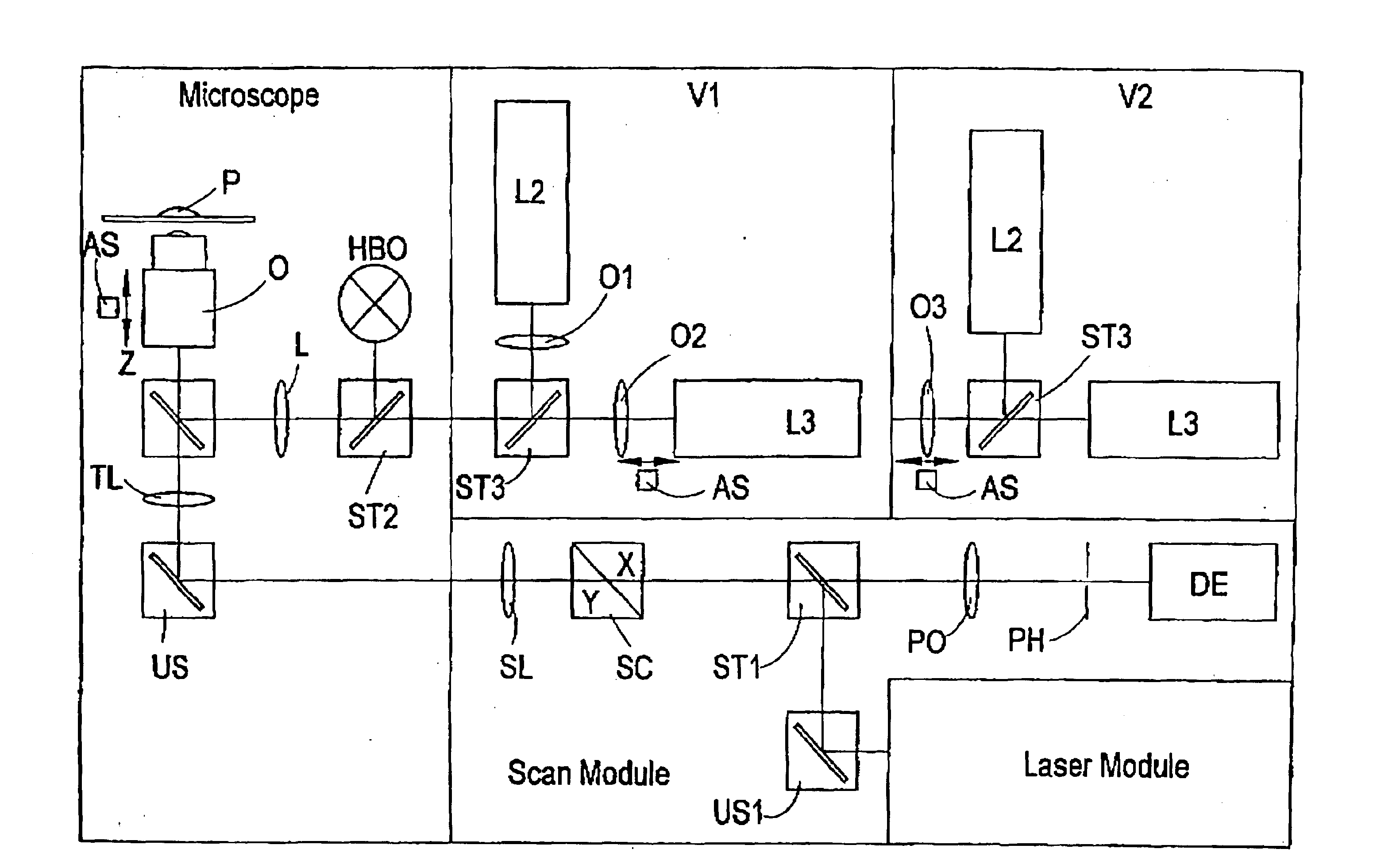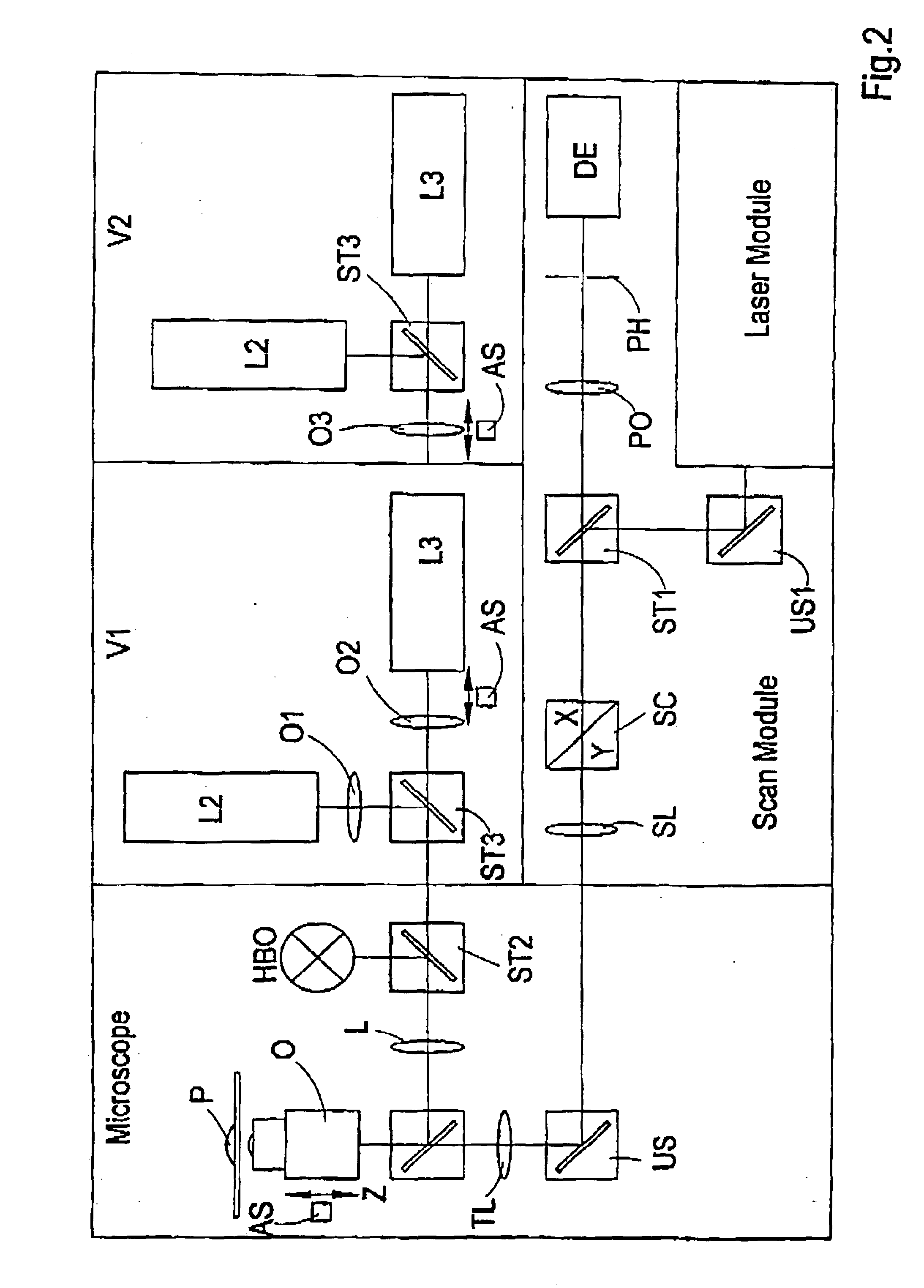System for introducing optical tweezers and/or a treatment beam into a laser scanning microscope
a laser scanning microscope and treatment beam technology, applied in the field of systems, can solve the problems of limited conventional microscope application, inability to achieve satisfactory images, and inability to access the specimen from abov
- Summary
- Abstract
- Description
- Claims
- Application Information
AI Technical Summary
Problems solved by technology
Method used
Image
Examples
Embodiment Construction
In the construction which is relevant for the invention, the optical tweezers are guided through the microscope objective into the object plane. They are adjusted in such a way that microscopic particles located in the object plane are fixed, that is, the focus of the optical tweezers lies in the object plane. However, in three-dimensional image recording through a laser scanning microscope, the object plane must be displaced in parallel in order to access the third dimension projecting out of the object plane. Accordingly, the focus of the optical tweezers is also displaced, which leads to an unwanted displacement of the fixated particles. Three-dimensional objects that are held by the optical tweezers can not be recorded in three-dimensional resolution without compensating for this displacement. Compensation of the displacement of the object plane, hereinafter referred to as z-compensation, comprises variable optical elements which are inserted into the beam path of the optical tw...
PUM
 Login to View More
Login to View More Abstract
Description
Claims
Application Information
 Login to View More
Login to View More - R&D
- Intellectual Property
- Life Sciences
- Materials
- Tech Scout
- Unparalleled Data Quality
- Higher Quality Content
- 60% Fewer Hallucinations
Browse by: Latest US Patents, China's latest patents, Technical Efficacy Thesaurus, Application Domain, Technology Topic, Popular Technical Reports.
© 2025 PatSnap. All rights reserved.Legal|Privacy policy|Modern Slavery Act Transparency Statement|Sitemap|About US| Contact US: help@patsnap.com



